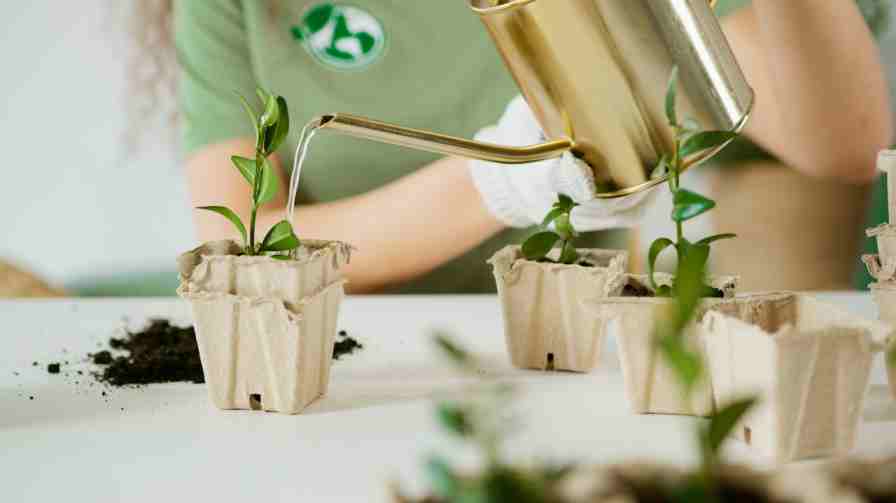
Table of Contents
Introduction -from voicesofconservation.org blog
Today, as environmental problems become more serious, the VoicesofConservation.org blog is a helpful source of hope and information. The blog focuses on raising awareness about conservation and protecting the environment. It shares stories and tips that inspire people to act and care for our planet. In this article, we’ll look at what makes the VoicesofConservation.org blog important and how it helps improve the environment.
Understanding from voicesofconservation.org blog
VoicesofConservation.org is a blog focused on saving the environment. It shares important information from people who care about nature, including conservationists and environmentalists. The blog aims to show why protecting our natural resources, wildlife, and different kinds of plants and animals is essential.
You can also read about – Carbonnen: Lightweight Strength and Sustainable Solutions
You can also read our latest post
History and Mission
The blog was started to help conservationists and regular people connect and share information. It wants to make conservation issues easy to understand for everyone. The blog has different features to educate and motivate people to participate in environmental efforts.
VoicesofConservation.org wants to do more than inform people. It also wants to inspire them to take action. By showing real examples and giving practical advice, the blog encourages readers to make sustainable choices in their own lives.
The Power of Storytelling in Conservation
From voicesofconservation.org blog shares its message by telling stories. Stories help people feel more connected and make complicated topics easier to understand.
Emotional Connection Through Stories
The blog shares different stories about people and their projects to protect the environment. It shows the problems and successes in these efforts and encourages readers to help with environmental protection.
For example, there’s a story about a young person who started a local cleanup and improved their community’s waste management. This shows that everyone can make a difference and supports the blog’s message that anyone can help.
Key Insights from voicesofconservation.org blog
From voicesofconservation.org blog offers a wealth of insights into various aspects of conservation. Here are some key takeaways:
Why Biodiversity Matters
Biodiversity means having many different kinds of plants, animals, and other living things in an area. It’s important because it keeps nature balanced and helps us get clean air, water, and good soil. The blog discusses why we need to protect this variety of life.
Why Biodiversity is Important
Biodiversity includes all living things, like plants, animals, and tiny organisms. Having many different species makes nature solid and able to handle problems. For example, other plants in a forest provide food and homes for many animals. If one type of plant is lost, it can affect the whole forest.
- Services We Need: Biodiversity helps with things we need, like pollinating crops, cleaning air and water, and controlling the climate. If fewer species exist, these services might not work well, affecting farming, health, and our quality of life.
- Genetic Diversity: Different genes help species adapt to changes. A mix of genes means some individuals will survive diseases or climate changes, essential for species’ survival.
- Cultural and Beauty Value: Biodiversity is essential to many cultures and makes the world beautiful. Different species and landscapes are important in traditions and stories. Nature also provides enjoyment and inspiration.
- Economic Benefits: Biodiversity supports farming, medicine, and tourism. Many products and medicines come from nature, so keeping biodiversity helps keep these resources available. Ecotourism, which depends on diverse nature, also helps local economies.
- Climate Control: Biodiversity helps control the climate by absorbing carbon dioxide. Forests, wetlands, and oceans take in carbon, and having a variety of ecosystems does this better than single-crop areas or damaged environments.
- Disease Control: Different species help control disease spread. With many species, no single one becomes the primary carrier of diseases. This balance helps prevent diseases from spreading to humans, animals, and livestock.
Protected Areas
Protected areas, like national parks, are crucial for saving biodiversity. They:
- Protect Habitats: They keep safe places for endangered species, helping to preserve biodiversity.
- Support Research: They offer chances to study nature, which helps improve conservation efforts.
- Attract tourists: They bring visitors who care about nature, provide money to local communities, and raise awareness about conservation.
- Fight Climate Change: They help absorb carbon and protect diverse ecosystems from climate impacts.
Sustainable Practices
The blog gives simple tips for living sustainably:
- Farming: Using trees with crops and rotating crops helps maintain soil health and supports biodiversity.
- Renewable Energy: Using solar and wind power helps reduce fossil fuel use and lower greenhouse gas emissions.
- Waste Reduction: Reducing, reusing, and recycling waste, along with composting, helps cut landfill use and enriches soil.
- Water Conservation: Using water-efficient appliances, fixing leaks, and innovative gardening practices help save water. Collecting rainwater and recycling greywater is moreover helpful.
- Green Building: Building with eco-friendly materials and improving energy use helps reduce the environmental impact of buildings.
- Transportation: Using bikes, walking, carpooling, and public transit reduces travel’s environmental impact. Electric and hybrid vehicles are, moreover, the largest for the environment.
Policy and Advocacy
Sound environmental policies and advocacy are essential for conservation. The blog covers:
- Laws: Laws like the Clean Air Act improve air and water quality and protect habitats.
- Local Efforts: Local campaigns and advocacy help promote environmental issues and change policies.
- NGOs: Non-governmental organizations (NGOs) lead conservation work and policy advocacy. The blog explains their efforts and how to support them.
- Awareness Campaigns: Campaigns help educate people about environmental issues and encourage action.
- Corporate Responsibility: Businesses impact the environment, and their actions can support or hurt conservation. Supporting companies with solid environmental commitments is essential.
- Advocacy Tools: The blog lists tools and resources for environmental advocacy to help people stay informed and take action.
Community Engagement
The blog encourages community involvement:
- Volunteering: Opportunities include tree planting and wildlife monitoring.
- Local Projects: Projects like polity gardens and river cleanups tackle specific environmental issues.
- Events: Hosting events like nature walks and recycling drives raise the sensation of environmental issues.
- Partnerships: Working with local groups, schools, and businesses can uplift conservation efforts.
- Success Stories: Sharing stories of successful polity projects can inspire others.
- Sustainable Choices: Making sustainable choices, like reducing waste and supporting local products, helps protect the environment and encourages others to do the same.
Community-Led Conservation Initiatives
From voicesofconservation.org blog shows many examples of community-led conservation projects. These projects show how local people can lead efforts to protect and restore their surroundings.
Reviving Kenya’s Marine Life
In Kenya, coastal areas had fewer fish and damaged coral reefs because of too much fishing and pollution. Local fishermen, who were once part of the problem, helped solve it. They worked with marine scientists and environmental groups to create protected areas in the ocean and use better fishing methods. This teamwork helped the coral reefs and fish return, showing that involving the community can protect marine life.
The blog explains how the fishermen’s work to create protected ocean areas (MPAs) helped reduce overfishing and allowed fish numbers to grow. It also shows how MPAs helped local communities by increasing fish and improving their lives.

Forest Conservation in Nepal
In Nepal, a program called Community Forest Management lets local people manage their own forests. This has helped stop deforestation and increase plant and animal life. It shows that when people work together, they can make big environmental improvements.
The blog explains how this program works and how locals help manage the forests. It also shares success stories from different areas in Nepal to show the positive effects of community-based conservation.
Urban Conservation Efforts
Cities have environmental problems and from voicesofconservation.org blog talks about solutions. This includes making parks, starting city gardens, and cutting pollution. The blog shows how cities use eco-friendly methods to improve life for people and animals.
Urban conservation efforts include adding green roofs, creating community gardens, and improving public transportation to reduce pollution. The blog gives examples from cities worldwide that are doing well with these efforts.
The Future of Conservation
As environmental problems keep changing, the future of conservation will depend on everyone working together and staying committed. from voicesofconservation.org blog highlights that each person can help protect the environment. Whether using less plastic, supporting conservation groups, or pushing for environmental policies, every action helps in the more considerable effort toward sustainability.
New Trends in Conservation
The blog talks about new trends in conservation. It covers how technology like drones and camera traps helps track wildlife and environmental changes. It also explains how citizen science, where regular people help collect and analyze data, makes a difference. These trends offer fresh ways to improve conservation and involve more people. The blog looks at these trends and how they might shape the future of conservation.
Why Education Matters for Conservation
Education helps people learn about and care for the environment. This blog shows why teaching about environmental issues in schools and community programs is essential. It also gives people ways to learn, helping them become more aware and involved.
Working Together Around the World
Conservation is a big problem that requires people from different countries to help each other. The blog explains how countries, groups, and communities are working together to protect nature. It shows how this global teamwork helps solve issues like climate change, the loss of plants and animals, and the destruction of natural places.
Conclusion: from voicesofconservation.org blog
The from voicesofconservation.org blog helps people learn about conservation and protecting the environment. It shares fascinating stories and functional wares that encourage readers to take action.
As we think well about what we’ve learned from the blog, let’s commit to protecting our planet for future generations. By staying informed and active, we can help make the world prominent.
Every small effort helps. Conservation is a long-term goal, and with blogs like from voicesofconservation.org blog, we can all make a difference. Check out the blog, get inspired, and learn how to help the environment. Together, we can create positive transpiration and ensure a more significant future.
For increasing information and to get involved, visit the from voicesofconservation.org blog. It has a lot of helpful information and ideas for anyone wanting to impact the environment positively.Now you know that from voicesofconservation.org blog.
FAQs – from voicesofconservation.org blog
What is biodiversity, and why is it important?
Biodiversity refers to all the different living things on Earth, such as plants and animals. It’s important because it keeps nature healthy and provides clean air, water, and good soil. It also helps nature adapt and gives us many benefits.
How does losing biodiversity affect nature and people?
When we lose biodiversity, nature becomes unbalanced and less able to handle changes. This means fewer benefits like clean water. For people, it can affect farming, health, and the economy. We might also lose cultural values and fun activities.
What are protected areas, and how do they help?
Protected areas are unique places like parks where nature is kept safe. They help save important habitats, support research, attract ecotourism, and provide safe homes for plants and animals.
What are some easy ways to be eco-friendly?
Use renewable energy (like solar power), recycle, and save water by fixing leaks. Use green building methods and choose transportation like biking or carpooling.
How can I get involved in environmental efforts?
Support good environmental laws and join local groups. Help conservation organizations and talk about environmental issues. Encourage eco-friendly business practices and use tools like petitions.
Why is community involvement significant?
Community involvement helps conservation work better. Volunteer for projects, join cleanups and attend environmental events. Work with local groups and share success stories to inspire others.
How can I start my conservation project?
Pick an environmental issue, plan the project, and involve the community. Work with local groups and track progress. Share your results to inspire others.
What are some examples of successful projects?
Examples include planting trees, protecting endangered animals, and starting community gardens. River cleanups and educational programs also help with environmental issues. from voicesofconservation.org blog


